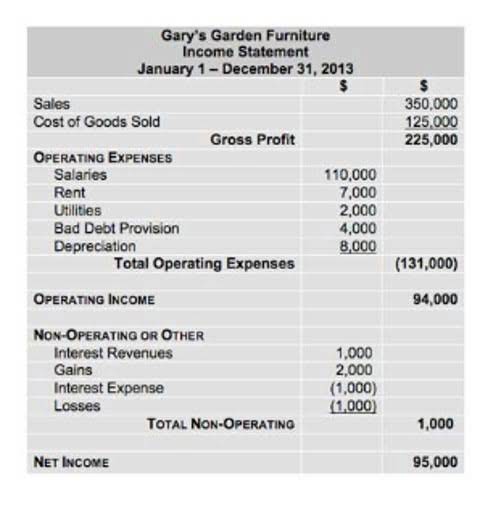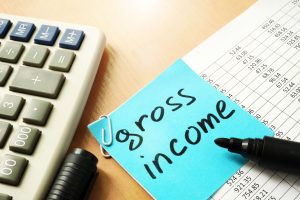
Volopay allows you to schedule recurring payments, set smart triggers for automatic bill payments, and track them in real-time, ensuring timely payments and better cash flow management. Expense management software enforces compliance with your spend policies, preventing unauthorized expenses. Tools like Volopay flag violations, such as an employee exceeding travel budgets.

Cash Accounting Definition, Example & Limitations
Your net profit calculation is a fundamental financial metric that shows your business’s profitability after all costs, including operating costs, have been deducted from revenue. Operating costs impact your bottom line directly higher operating costs reduce the net profit, while lower operating costs improve profitability. Your cost structure plays a critical role in determining your profit margins. Operating costs are an essential part of your cost structure, as they encompass expenses like wages, rent, and utility bills that directly support your business’s day-to-day operations.
What are the 5 fundamental components of operating costs?

Many organizations see 15-25% efficiency improvements within the first year. Also consider qualitative benefits like reduced stress, improved employee satisfaction, and enhanced business value. His insight about creating a “schematic” of business operations parallels how auto technicians use detailed diagrams to diagnose and solve mechanical problems.
How do you calculate operating costs?
If the majority of a company’s expenses are fixed, its profit increases with the level of production. It is important to distinguish ongoing costs from one-time or upfront costs. Upfront costs include expenses like equipment purchases, licensing fees, and renovations, while ongoing costs are the recurring charges required to keep operations running. For example, in real estate or mortgages, upfront fees might cover appraisal and closing costs, whereas ongoing costs include property taxes, insurance, and maintenance. Generally, operating expenses cannot be capitalized and are typically expensed in the period they are incurred. Financial reporting of operating expenses plays a crucial role in budgeting and forecasting processes.
- In an income statement, operating expenses are listed below the gross profit, which is calculated by subtracting the cost of goods sold (COGS) from total revenue.
- Misclassification can lead to inaccurate financial statements, poor business decisions, and potential legal or tax issues.
- They fall under the category of labor costs, which are essential for maintaining normal business operations and generating revenue.
- Discover the definition, formula, and various types of operating costs in finance.
- With a clear understanding of operating costs, you can maintain transparent communication with employees, investors, and other stakeholders.
- Break it down by department, project, or cost category, aligning with your cost analysis and estimations.
- Always consult with a tax professional to ensure you’re claiming deductions correctly.
- By incorporating accurate cost data into your forecasts, you can predict future expenses and plan for various financial scenarios.
- Average office furniture cost per employee, assuming mid-level quality, tends to hover around $1,500 to $2,000.
- While some SG&A costs, like salaries and rent, remain constant, others, like commissions and marketing spend, can vary.
- It typically relates to recurring expenses such as rent, interest payments, insurance payments, and bank fees.
Non-operating expenses are costs not directly related to the primary business activities. Understanding the distinction between operating expenses and other business costs is crucial for accurate financial reporting and decision-making. Let’s explore how operating expenses compare to other types of business costs and why these differences matter. Volopay’s seamless integration with accounting software, payment processors, and ERP tools makes it easy to link the platform with your existing business systems. This integration streamlines your workflows, reduces the need for manual data entry, and ensures that all financial data is accurately transferred between platforms. These reports integrate with accounting systems, streamlining reconciliations.
The operating profit may present the company’s financial situation more positively than the net profit reflects if a company has a particularly high debt load. Operating profit is also referred to as earnings before interest and tax (EBIT) but EBIT can include non-operating revenue that isn’t included in operating profit. EBIT and operating profit will be the same figure if a company doesn’t have any non-operating revenue. Microsoft, for example, leverages AI for predictive analysis of cost trends.


The sale of assets such as real estate and production equipment isn’t included either because these sales aren’t a part of the core operations of the business. It is noteworthy that the same category of an operating the costs of operating a business are called expense can be either a fixed cost or a variable cost, depending on the situation. For example, the wage for a full-time office employee is a fixed cost to the company, while the wage for an assembly line factory worker can be identified as a variable cost. Understanding the distinction can help managers to better control the operating expenses while considering the timeframe. Let’s use the cost formula to take a look at a baker’s small business operations. The baker needs ingredients, tools, and product packaging for their operations.

By taking a proactive approach to managing your operating costs, you can ensure the financial stability and continued success of your business. They represent more static costs and pertain to general business functions, such as http://reports.the-star.co.ke/archives/14678 paying accounting personnel and facility costs. Operating expenses are ongoing costs incurred during regular business operations, while startup costs are one-time expenses incurred when establishing a new business. Analyzing operating expenses can reveal opportunities for improving operational efficiency.
Performance evaluation
- The third type of business costs is known as semi-variable and is similar to fixed and variable costs.
- As technology advances, more sophisticated AI-driven solutions will further optimize business operations, resulting in reduced operating expenses.
- The sale of assets such as real estate and production equipment isn’t included either because these sales aren’t a part of the core operations of the business.
- Implementation timelines vary based on organization size and complexity, but most businesses see initial improvements within days of systematic implementation.
- Begin by identifying one primary target client and one primary product or service you deliver to that client type.
- Managing rent costs ensures that they align with your production needs and help optimize profitability without wasting valuable resources on unnecessary space.
And when margins are tight and competition is fierce, effectively managing OPEX can mean the difference between success and getting left behind. Systems thinking literally makes your business transparent, allowing you to clearly see root causes of problems and their obvious solutions. Consider how systematic operations enable superior customer Accounting For Architects value propositions. Documented processes ensure consistent quality delivery regardless of which team member serves the customer. Streamlined workflows reduce processing time, enabling faster response and delivery. Efficient resource utilization lowers operational costs, creating margin for competitive pricing or enhanced service levels.
How Do You Calculate Operating Expenses?
G&A expenses help maintain smooth operations and ensure your business runs efficiently, but they should be controlled to prevent unnecessary overhead that could affect your bottom line. These costs impact your financial health, profitability, and ability to scale efficiently. Here’s a detailed breakdown of these two types of costs and their significance in business. These costs require careful monitoring, as they can escalate unexpectedly. Managing semi-variable costs helps you balance operational flexibility with cost predictability.
